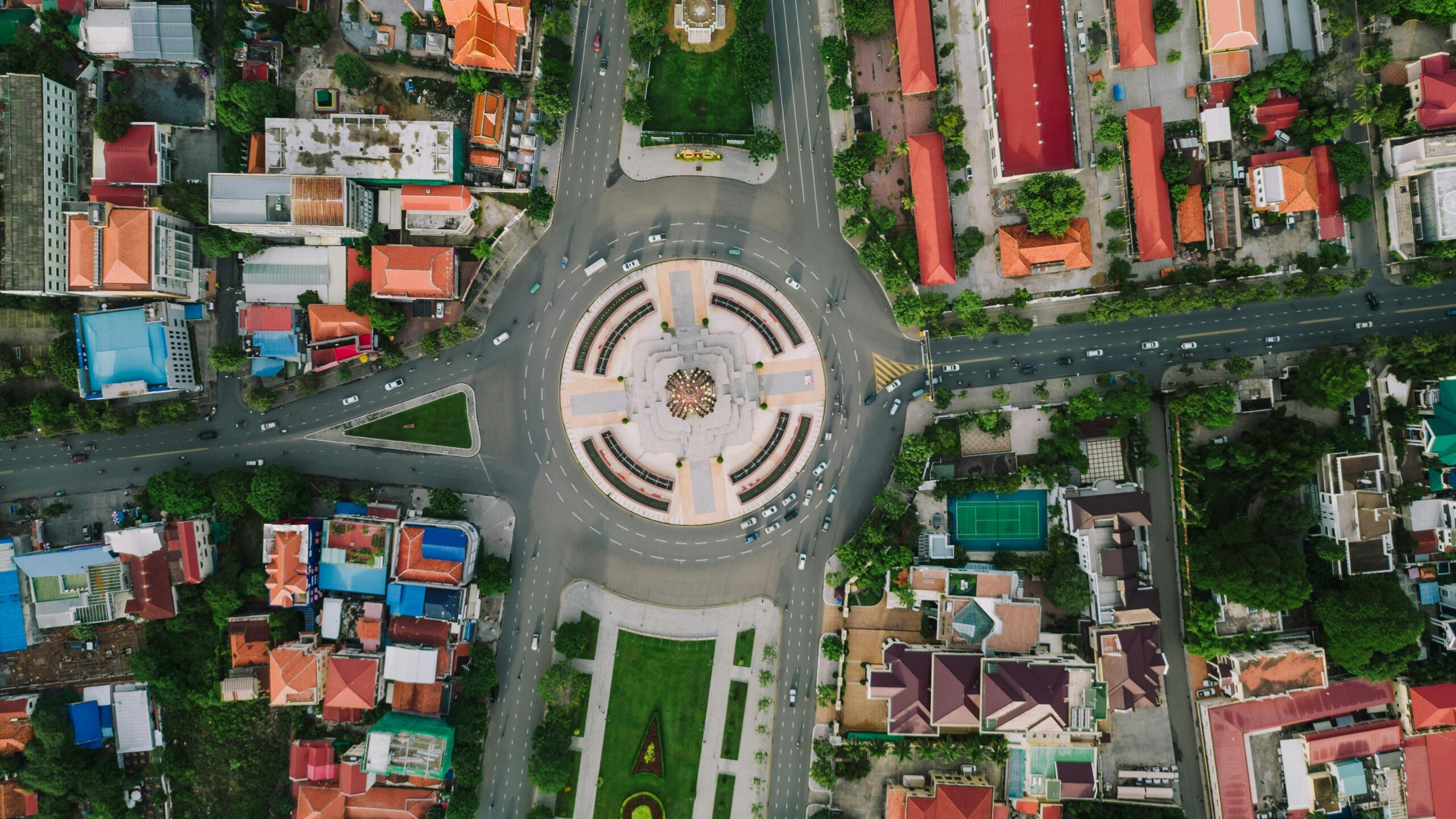Despite the COVID-19 crisis wreaking havoc on Cambodia’s growth performance, the urban growth in Cambodia is far from slow. Although it’s still recovering, we can also see cities expanding, and neighbourhoods changing shape. And with all of this, demands for stronger infrastructure arrive faster than governments can respond.
The pressure of populations that keep moving in is strong, but volunteers can step in while the government plans for strategies to tackle this issue. Without them, Cambodia’s urban development would drastically suffer, along with all the people finding shelter in this beautiful country in Southeast Asia.
Building With Human Hands

For good infrastructure, you need concrete, steel, and machines that allow you to build something greater than yourself. But in Cambodia, many volunteer programs remind people that cities are also built with bare hands. A group of volunteers in charge of small-scale repairs can completely change a neighbourhood. The work happens faster, too, as people don’t have to wait for formal contracts, like government officials do.
But it’s not just about speed and efficiency. Sometimes, having networks of volunteers in charge can save or drastically improve lives. Take O’Kralanh village, for example, where a group of volunteers known as the PASSA team had built a 900-meter long road that saves this and all the surrounding villages from the challenges of the rainy season.
It may sound simple, yet these tasks and projects reduce risks, improve mobility, and create spaces where life doesn’t feel uncertain or exhausting. By giving time, volunteers give infrastructure a pulse.
Knowledge as a Material
Of course, not every volunteer program is about digging and lifting. Luckily, we have many volunteering opportunities where knowledge can become a tool just as vital as cement. A skilled volunteer can train local workers and teach them new techniques without lifting a single brick. They can also talk about safer construction practices, or energy-saving designs, all vital for solid infrastructure development.
In Phnom Penh and Siem Reap, workshops led by volunteers have introduced communities to many valuable options, such as inexpensive water filters and low-cost housing models. And when people learn about different options, as well as different skills, they carry them into future projects. This, slowly, but surely, multiplies the impact. This passing of knowledge becomes a sustainable foundation for future growth.
Youth Engagement as Urban Energy
Cambodia has a young population. You can join and become a volunteer in Cambodia, finding programs that give both you and them an entry point into shaping the cities they will one day inherit. There are already many student groups that paint crosswalks, plant trees along dusty streets, or campaign for recycling bins to create visible proof of what civic responsibility looks like.
It is infrastructure in a softer sense, of course. But it’s still an important part of society because nothing feels better than contributing to your community, or helping those in need have a decent place to live. Young volunteers not only build but also change attitudes, showing peers and families that participation in city development is not reserved for officials. It belongs to everyone who walks the streets daily.
International Volunteers Bridging Gaps
International volunteer programs often receive mixed opinions. That’s understandable, as some programs aren’t as problem-oriented as they should be. But in Cambodia, things are different. Volunteering programs have played a role in bridging resource gaps.
With the Asian Infrastructure Investment Bank, or AIIB, investing in sustainable infrastructure, it’s not enough just to have the resources without the experts. But with volunteering, Cambodia can benefit from teams of engineers, architects, or environmental specialists lending their skills for projects too complex for local teams alone.
A drainage upgrade in flood-prone areas or a waste management pilot scheme may rely on this combined effort. The challenge is always cultural sensitivity and ensuring locals remain at the centre. This makes it important to find a reliable program that approaches these issues carefully.
When the exchange of knowledge and culture is done correctly, these collaborations bring outside perspectives without erasing Cambodian identity. After all, cities benefit not only from labour but also from shared methods that would be too costly otherwise.
Volunteers in Disaster Response
Urban infrastructure in Cambodia often faces disruption. That is due to seasonal floods or sudden climate events that are specific to this part of the world. We can’t escape the weather, but we can respond to it. It’s safe to say that volunteers have become a vital part of the rapid response.
When a disaster strikes and your life and your property are affected, it’s challenging to do your best to help everyone out. But with a team of volunteers, blocked waterways get cleared faster, and repairing damaged community shelters becomes a priority. Volunteers can also distribute supplies through streets that official vehicles cannot access, and all of these acts prevent the infrastructure and the community from further collapse.
Without volunteers, the aftermath of a heavy monsoon could paralyse parts of the city for months. This is devastating for the locals. When something like this happens, everything stops. Oftentimes, the entire flow of the community is disrupted. Infrastructure is not only what is built, but also what is defended against destruction, and that’s why teams of volunteers are always needed.
Social Infrastructure Through Volunteers
The progress of any urban development is seen in roads, bridges, pipes, and all the other physical lines that shape a city. But the other side of infrastructure is less visible. It lies in the trust built between neighbours. It is the shared responsibility that makes a community work.
In Cambodia, this softer layer has become increasingly important. Volunteers often step in during moments of strain, like during seasonal floods when local groups coordinate food or organise small shelters. But, the state has been reshaping its own role in parallel.
Over the past decade, disaster risk reduction has moved to the forefront of national urban planning. You now have local authorities mapping out flood defences, while district and commune officials identify small but vital improvements. At the centre of this system sits the National Committee for Disaster Management, designed to mobilise funds and direct resources across ministries.
A vital idea is that volunteers and government institutions don’t function in opposition here. Instead, they overlap in practice, and they do it well. A neighbour-led food distribution may not stop the water from rising. However, it keeps families afloat until larger interventions take effect.
In a way, when you look at volunteering and government projects, it’s clear that one strengthens the other. Without both, the country’s capacity to endure would thin. The good thing is that this symbiosis between volunteers and the government works. And the reason it works is because both sides have progress in mind and operate from the place of love for Cambodia and its people.
Sustainability and Environmental Roles
Rapid urbanisation in Cambodia risks pushing aside the environment. Although some investors, like the AIIB, prioritise sustainable and environmentally-friendly choices, it’s not always possible to implement the best practices.
That’s why volunteer programs often intervene to balance this. Planting green spaces, or just setting up community recycling hubs, reminds people about preservation, and it also gives them more options to care about their environment.
As it usually goes, volunteers can bring attention to sustainability in ways official agendas sometimes can’t. The neglect is usually due to economic pressure, but neglect is neglect regardless of the reason. Volunteers remind people that a liveable city must breathe and have enough shade. It must manage waste responsibly. Without this voice, urban development risks becoming a march of grey concrete.
Volunteers as Connectors of Policy and People
One overlooked role is how volunteer programs translate policies into lived reality. Governments may announce initiatives like waste separation, safer transport, and affordable housing plans. These all look great on paper, but they remain on paper if nobody implements them locally.
Volunteers act as the bridge. By organising workshops, running pilot projects, or explaining new systems to communities, they make policy tangible. Without them, residents might see urban development as distant and unconnected to daily life. With them, change feels closer, something ordinary citizens can touch.
Conclusion
The story of Cambodia’s cities is not written only by officials, investors, or developers. Volunteers play a role that is harder to measure but impossible to ignore. Our volunteers build, teach, and connect with the locals. They give shape to Cambodia’s infrastructure, allowing its growth to become smoother. In the long run, urban Cambodia will not only be remembered for the buildings that rise but also for the volunteers who made sure those buildings fit into lives with less struggle.


